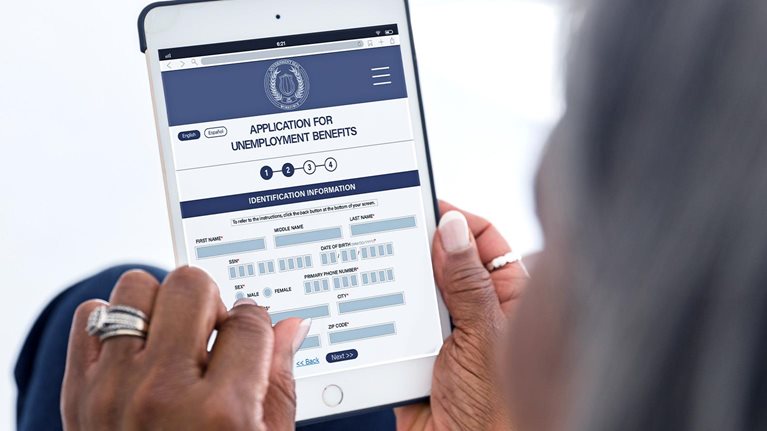As the US economy has evolved, it has shifted from predominantly manufacturing to services. While some of these services industries have made productivity improvements, many lag behind the overall economy. For example, healthcare remains a growth engine for the US workforce but is one of the slowest in terms of labor productivity growth.1 Government is also largely a services industry and offers one of the economy’s largest productivity improvement opportunities.2
For nearly all countries, government represents the largest portion of the economy and is the biggest employer (Exhibit 1). For example, in the United States, government at all levels accounted for about 47 percent of GDP and about 17 percent of total employment in 2020.3 Furthermore, government plays a critical role in society, ranging from building roads to educating youth. In many cases, when the government intervenes, it is necessary because there is no functioning competitive private counterpart.

Moreover, the imperative to capture the government productivity improvement opportunity has intensified. The COVID-19 pandemic put pressure on economies around the world, prompting governments to spend large amounts of money to distribute COVID-19 relief. As COVID-19 moves to an endemic phase, new macroeconomic issues have emerged, most notably a talent shortage, inflation, and high debt-servicing costs.4 For example, in 2022, the US federal government spent the largest amount ever on debt interest, reaching nearly 2 percent of GDP.5 Having to get by with both a smaller workforce and weaker government balance sheets suggest that the need for productivity improvements has increased.
In this article, we set out to estimate the size of the US government’s productivity improvement opportunity. We defined productivity as operational efficiency; other researchers have focused on policy effectiveness (see sidebar “Why has it been difficult to measure government productivity?”). We quantified the US government productivity improvement opportunity by level—federal as well as state and local—and category, such as healthcare or road transport.
Overall, we found a $725 billion to $765 billion productivity improvement opportunity—that is, roughly $750 billion annually that could be saved while keeping government services operating just as effectively. This would be equivalent to more than $2,000 per resident. About 60 percent of the total was at the state and local level. Across categories, about 40 percent of the opportunity was in healthcare; 9 percent was in primary and secondary education.
We also converted this opportunity into an operational framework that could aid government organizations in determining what actions to take. Based on our experience with hundreds of public- and private-sector organizations, the framework suggests that operational challenges lie in an organization’s ability and motivation to improve.
We recognize and acknowledge that a variety of civic compacts shape how governments set priorities, and thus governments have fundamentally different imperatives than those of the private and social sectors. Government organizations may make productivity trade-offs in service of those institutional imperatives. In this report, productivity is the focus, but it is just one way of evaluating government activity.
The US government productivity improvement opportunity
To estimate the US government productivity improvement opportunity, we used a previously published approach by the McKinsey Global Institute and adapted it to conduct a country-specific analysis.6 This approach accounts for both cost and quality and is applied to the federal level and the state and local level. We centered our analysis on five core government spending categories in which cost and quality data were readily available: healthcare, road transport, primary and secondary education, higher education, and public safety. We then used these estimates to scale across the remaining categories of government spending.
We based our analysis on 2020 government spending data. That year, after accounting for intergovernmental transfers, governments in the United States spent $9.9 trillion, of which approximately 58 percent was at the federal level and the remaining 42 percent was at the state and local level (Exhibit 2).7 Of this total, about 42 percent was either unspecified or could not be further optimized in terms of operations, such as paying interest on debt or Social Security payments. This type of spending was excluded because it is not related to efficiency of production but is more commonly related to policy effectiveness, which was not in the scope of this article. As a result, our analysis focused on $2.3 trillion of government spending at the federal level and $3.5 trillion at the state and local level.

We then estimated that the US government productivity improvement opportunity is $725 billion to $765 billion, adjusting for wage differences across states (see sidebar “How we measured the US government productivity improvement opportunity”). About 60 percent of the total was at the state and local level, with nearly a third of the opportunity in healthcare and about 15 percent in primary and secondary education. Of the remaining 40 percent at the federal level—$285 billion to $295 billion—about 50 percent of the opportunity was in healthcare (Exhibit 3).

From opportunity to action
We also sought to offer insight on how government leaders could capture the productivity improvement opportunity. To do so, we used a previously developed operational framework that lays out how the public sector could pursue productivity improvements (Exhibit 4).8

At its core, the framework seeks to identify challenges related to an organization’s ability to improve compared with its motivation to improve in the government setting. We found that more than 60 percent of the opportunity was tied to an organization’s ability to improve. There are two important operational focus areas. The first is an organization’s ability to experiment, which allows organizations to implement interventions such as improving processes and optimizing governance. The second is the ability to sunset outdated infrastructure, a tactic that is being employed across industries today with tools such as artificial intelligence. The inability to do this can, for example, prevent the better use of IT and automation.
A government organization’s motivation to improve accounts for the remaining 40 percent or so of the opportunity. The largest operational focus area, representing more than 60 percent of the motivation opportunity, is associated with feedback loops. This refers to organizations receiving feedback on their goods or services from consumers. Proven interventions include enhancing consumer experience, which is rapidly expanding in adoption across the public sector.9
Another operational focus area related to motivation is the existence of incentives for goods or services improvement by employees. In this case, example interventions include hiring the right talent or aligning leadership on organizational outcomes.
A third motivation-related operational focus area is how to overcome a lack of budget constraints for consumers. In many cases, consumers have no choice but to deal with a government organization, such as when obtaining or renewing a driver’s license. Unlike other purchasing choices, such as trading off between how much food or entertainment to purchase, these government products and services are necessities, creating no motivation to improve. Reframing the consumer’s budget from cash to another metric, such as time, can generate this motivation, such as providing faster self-service options for renewing a driver’s license.
For many years, policy makers, organizational leaders, and researchers have discussed—and often largely dismissed—capturing productivity improvements in government. Using a definition and approach focused on operational efficiency, we estimated a potential $725 billion to $765 billion opportunity. We found that more than 60 percent of the opportunity could be captured by providing organizations with a greater ability to improve; the remainder could be captured from motivation. In the remaining articles in this series, we will break down the roles that government plays to better identify approaches on how to improve productivity at the organizational level.
This article is the first in a series on the US government’s productivity improvement opportunity.





